Table of Contents[Hide][Show]

While we are all very familiar with common-variety land-grown garden vegetables, the ocean provides us with a wide-range of aquatic veggies too! Though they are commonly associated with Asian cuisine, seaweed is becoming more main-stream even for those of us not living in coastal locales. Seaweed snack, anyone?
Not only are sea vegetables incredibly tasty, they’re also one of the most unique and nutritious foods on the planet and have been consumed for thousands of years!
Sea vegetables consist of edible plants and algae that grow in or near the ocean. Not only are these foods incredibly tasty, they’re also one of the most unique and nutritious foods on the planet! They’ve been consumed for thousands of years in coastal areas like China, Korea, and Japan (where seaweed residue has been found in clay pots dating back to 3000 BC!). In fact, in one of Japan’s earliest legal codes (the Taiho Code of in the 8th century AD), they were even legislated to be an acceptable form of tax payment! Sea vegetables include items like sea beans and sea purslane (types of flowering succulents) and the more familiar edible seaweeds – all of which have different nutritional profiles (read – try them all!) Most of us are familiar with nori that wraps sushi rolls, which is a type of red algae (also dulse and Irish moss) but there are also green algae (e.g., sea lettuce) and brown algae which includes different types of kelp.
Some species of kelp can grow as much as 20 inches (0.5 m) in a day, eventually reaching heights of 100 to 260 ft (30 to 80 m)!
Kelp are large, leafy, brown algae that form dense under-water forests anchored close to the shore and despite how they look, they are not in fact plants (they don’t have roots, leaves or stems to transport nutrients!). Kelp have been around for anywhere between 5 to 23 million years. In general, they thrive in waters with temperatures between 43 and 57 F (6 and 14 C) and are known for growing quickly (some species can grow as much as 20 inches (0.5 m) in a day, eventually growing 100 to 260 ft (30 to 80 m) long). In nature, kelp forests are extremely important for promoting biodiversity by providing habitats for all kinds of marine life. In fact, they are great for our overall environment – most of the world’s oxygen (a whopping 70%) comes from seaweeds and algae, plus seaweed is one of the biggest carbon sequesters on our planet! When it comes to humans, historically kelp was burned to obtain soda ash (sodium carbonate) and was used in the production of iodine, whereas today kelp is used to produce alginate (a thickening agent in foods), in cosmetics and in dentistry for making molds, in addition to its culinary popularity. It is produced by many countries around the world, namely China, where kelp is harvested directly from nature and farmed in saltwater tanks or from garden plots at sea.
Most of the world’s oxygen (a whopping 70%) comes from seaweeds and algae, plus seaweed is one of the biggest carbon sequesters on our planet!
There are many varieties of kelp, most of which are popular in Asian cuisine. These include alaria (also called badderlocks; a delicately flavored winged kelp and a traditional food in Greenland, Iceland, Ireland, and Scotland), arame (lacy, wiry, sweeter and milder than many seaweeds; often used in stir fries), kombu (thick Pacific seaweed with a potent umami flavor important in Chinese, Japanese, and Korean cuisine, especially to flavor broths), and wakame (dark green and subtly sweet; popular in traditional seaweed salad and miso soup). In Russia, “sea cabbage” is a mix of several types of kelp used in salads, soups and pastries. Other types of kelp include bombu, cochayuyo, ecklonia cava, Hiromi, oarweed, sea palm bull kelp, and sugar kelp. Overwhelmed? Don’t be. If incorporating kelp in your diet seems like a daunting task – try kelp noodles as a first step! These super-long, crunchy-esque noodles are easy to use and versatile. Adding them to soups is a great way to start including sea vegetables into your diet!
Nutrivore Score for Kelp – 700
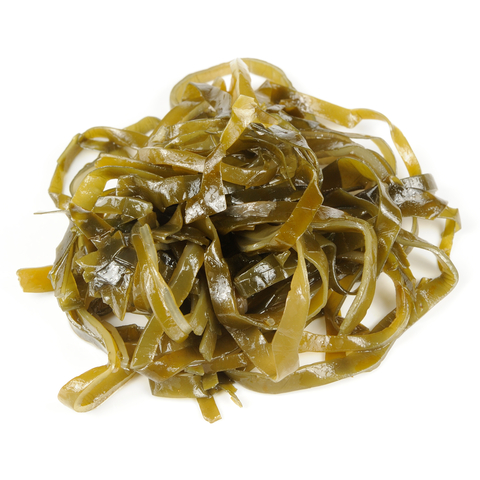
Kelp has a Nutrivore Score of 700, making it a high nutrient-dense food! Plus, it is a low-carb and low-calorie-density food; the calorie count of kelp is 34 calories per cup!
Per serving, kelp is a best source (>50% daily value) of iodine; an excellent source (20-50% daily value) of magnesium, vitamin B7 (biotin), vitamin B9 (folate), and vitamin K; and a good source (10-20% daily value) of calcium, copper, iron, and vitamin B5 (pantothenic acid).
Ditch Diets. Embrace Nutrients. Start with this FREE Guide.
Sign up for the free Nutrivore Newsletter, your weekly, science-backed guide to improving health through nutrient-rich foods — without dieting harder —and get the Beginner’s Guide to Nutrivore delivered straight to your inbox!

Kelp Nutrition Facts
One serving of kelp is standardized to 1 cup or about 80 grams (2.8 ounces).
Kelp Nutrition Facts Per Serving
| Kelp, raw | Nutrivore Score: 700 | Nutrient Density: High |
|---|---|---|
| Serving Size: 1 cup (80 grams) | Protein: 1.3 grams | Net Carbohydrates: 6.6 grams |
| Calories: 34 | Total Fat: 0.4 grams | Dietary Fiber: 1.0 grams |
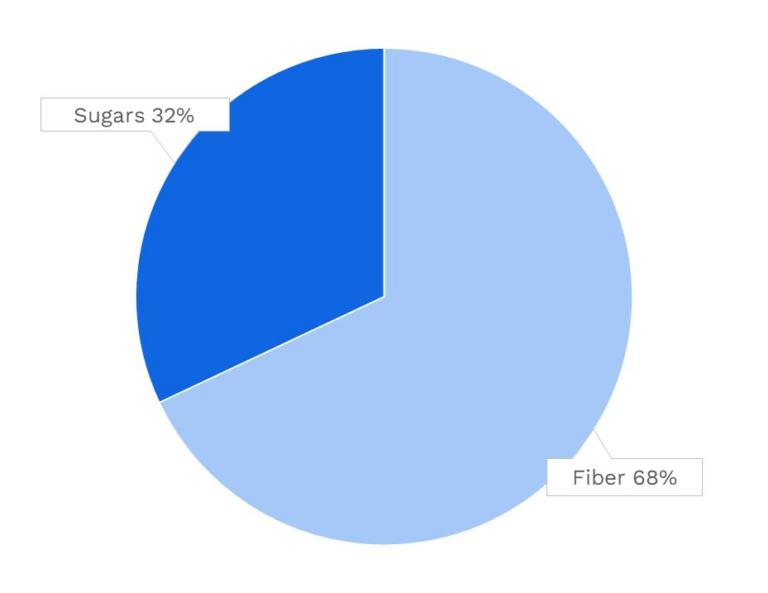


| VITAMINS | ||
|---|---|---|
| Vitamin A | 4.8 μg RAE | 1% DV |
| Vitamin B1 (Thiamin) | 40.0 μg | 3% DV |
| Vitamin B2 (Riboflavin) | 120.0 μg | 9% DV |
| Vitamin B3 (Niacin) | 0.4 mg | 2% DV |
| Vitamin B5 (Pantothenic Acid) | 0.5 mg | 10% DV |
| Vitamin B6 (Pyridoxine) | 1.6 μg | 0% DV |
| Vitamin B7 (Biotin) | 9.7 μg | 32% DV |
| Vitamin B9 (Folate) | 144.0 μg | 36% DV |
| Vitamin B12 (Cobalamin) | 0.0 μg | 0% DV |
| Vitamin C | 2.4 mg | 3% DV |
| Vitamin D (D2 + D3) | 0.0 μg | 0% DV |
| Vitamin E | 0.7 mg | 5% DV |
| Vitamin K | 52.8 μg | 44% DV |
| Choline | 10.2 mg | 2% DV |
| Myo-Inositol | ~ | ~ |
| CoQ10 | ~ | ~ |
| FUNCTIONAL FATS | ||
|---|---|---|
| MUFA | 0.1 g | 0% DV |
| ALA | 3.2 mg | 0% DV |
| EPA + DHA | 3.2 mg | 1% DV |
| CLA | ~ | ~ |
| Linoleic Acid | 0.0 g | 0% DV |
| MCT’s | 0.0 g | ~ |
| MINERALS | ||
|---|---|---|
| Calcium | 134.4 mg | 10% DV |
| Copper | 104.0 μg | 12% DV |
| Iodine | 78497.9 μg | 52332% DV |
| Iron | 2.3 mg | 13% DV |
| Magnesium | 96.8 mg | 23% DV |
| Manganese | 160.0 μg | 7% DV |
| Phosphorus | 33.6 mg | 3% DV |
| Potassium | 71.2 mg | 2% DV |
| Selenium | 0.6 μg | 1% DV |
| Sodium | 186.4 mg | 8% DV |
| Zinc | 1.0 mg | 9% DV |
| PHYTONUTRIENTS | ||
|---|---|---|
| Carotenoids | 56.0 μg | ~ |
| Polyphenols | 33.9 mg | ~ |
| Phytosterols | ~ | ~ |
| Glucosinolates | ~ | ~ |
| Thiosulfinates | ~ | ~ |
| Betalains | ~ | ~ |
| AMINO ACIDS & PEPTIDES | ||
|---|---|---|
| Taurine | ~ | ~ |
| Ergothioneine | 0.0 mg | ~ |
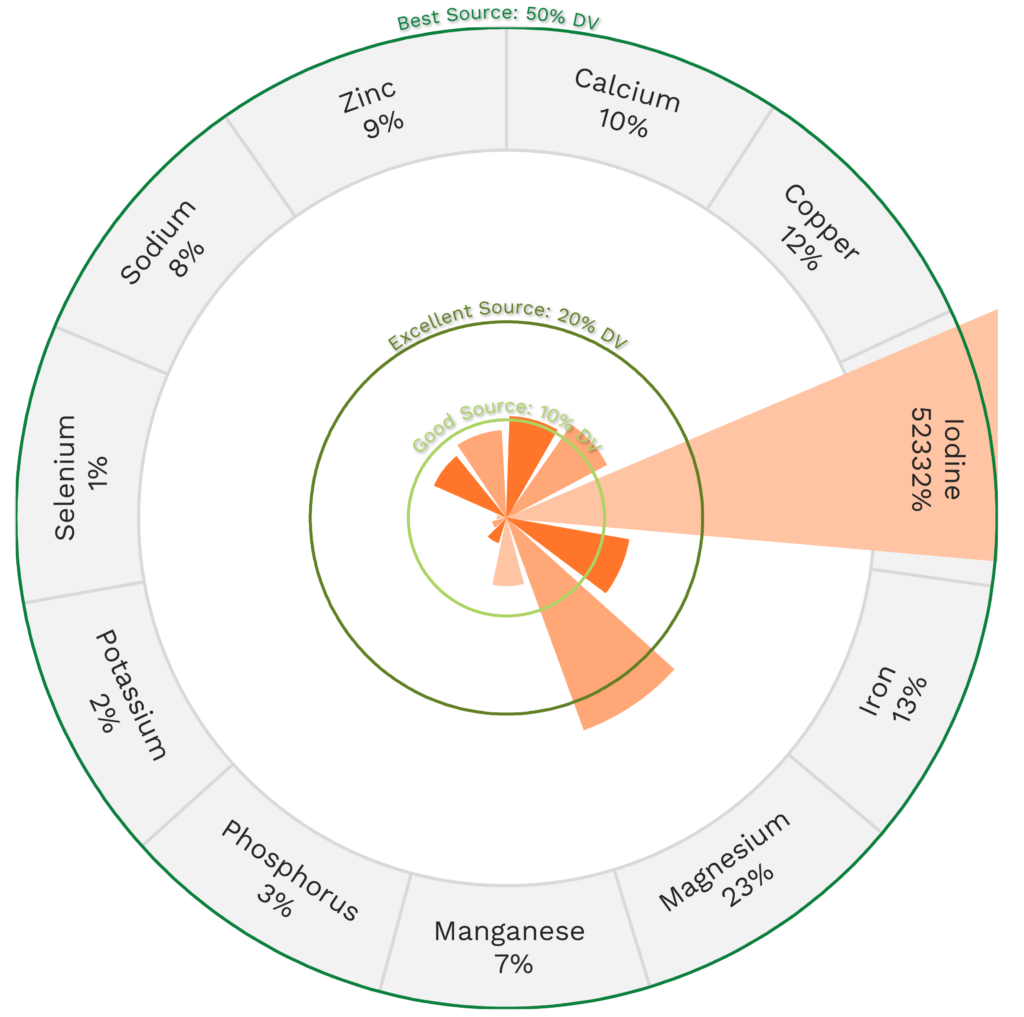
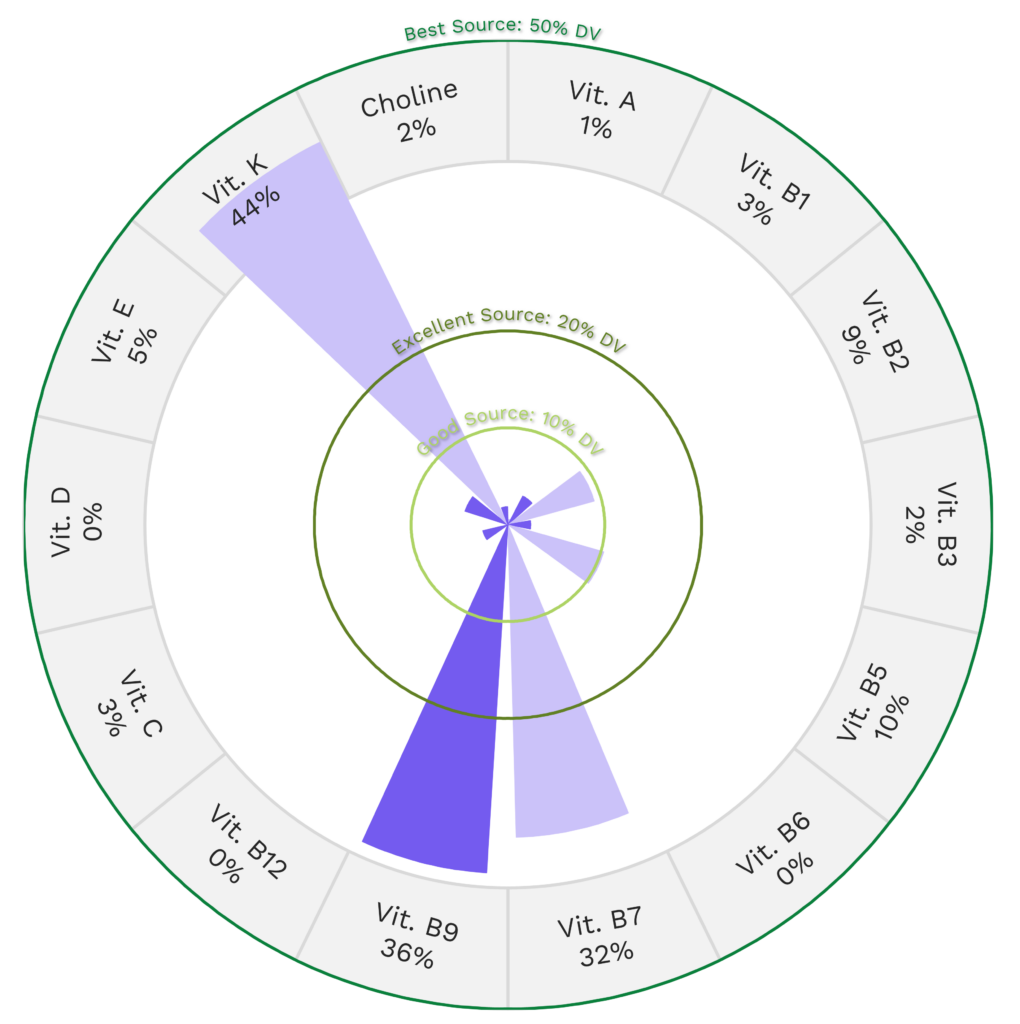
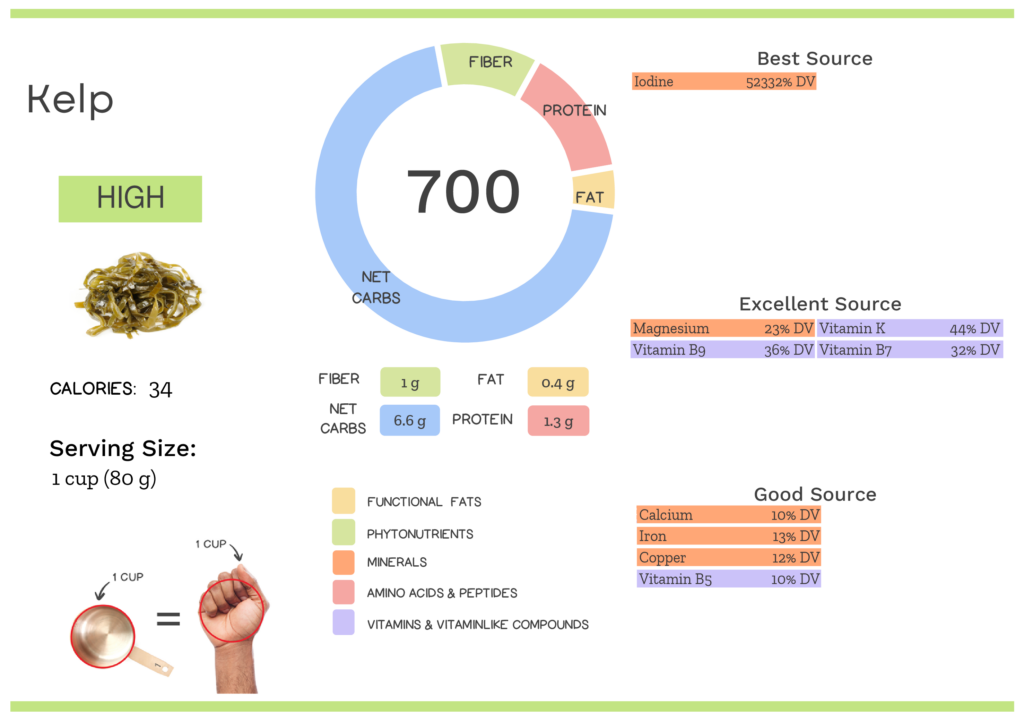
Seaweed Nutrition Varies With Variety
There are many types of edible seaweed, each with their own unique flavor and nutrient profile, which means their Nutrivore Scores vary too. To maximize all the benefits sea vegetables have to offer, try incorporating different types of seaweed into your diet, enjoying these gifts from the sea in whichever way your taste buds prefer!
| NUTRIVORE SCORE | |
|---|---|
| Agar, raw | 456 |
| Irishmoss, raw | 602 |
| Kelp, raw | 700 |
| Nori (laver), raw | 3910 |
| Wakame, raw | 841 |
Impressed to “sea” all the nutrition in kelp? Maybe your friends will be interested too!
Health Benefits of Kelp Nutrients
Let’s take a closer look at all of the best and excellent source of nutrients found in a 1-cup serving of kelp and see how they benefit our health.
Kelp Provides 52,332% DV Iodine
Kelp is a phenomenal source of iodine, providing an astounding 52,332% of the daily value per 1-cup serving!

Iodine is a trace mineral that serves as a structural component of thyroid hormones, giving it a major role in thyroid health and function. As a result, it’s involved in regulating metabolism, reproductive function, fatty acid release, carbohydrate absorption, growth, and development. Consuming adequate amounts is particularly important during pregnancy (for preventing complications like preeclampsia, preterm delivery, miscarriage, and stillbirth) and during childhood (where it supports central nervous system development). Untreated iodine deficiency can lead to goiter and hypothyroidism. Learn more about iodine here.
Kelp Provides 44% DV Vitamin K
Kelp is an excellent source of vitamin K, providing 44% of the daily value per 1-cup serving!
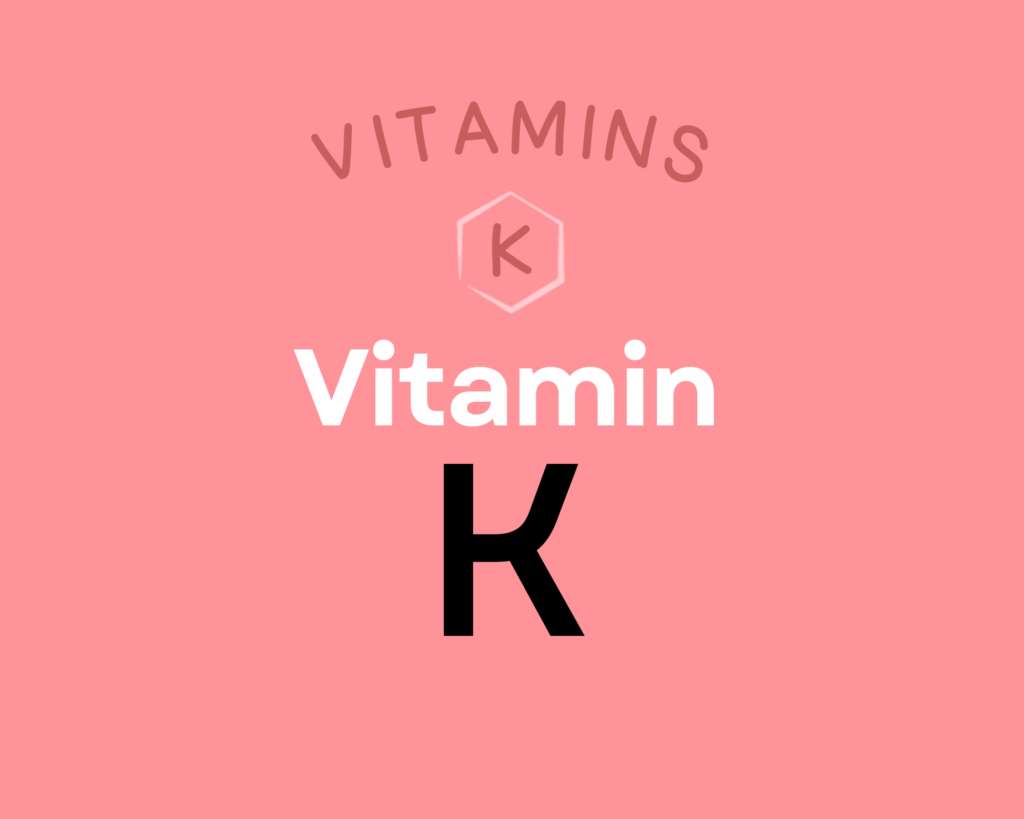
Vitamin K is actually a group of fat-soluble vitamins with a similar molecular structure, existing as K1, multiple isoforms of K2, and the synthetic form K3. This nutrient plays a vital role in coagulation, due to serving as a cofactor for proteins needed for blood clotting; it’s also essential for bone metabolism, cellular function, and the prevention of soft tissue calcification. Getting enough vitamin K2 can help protect against cardiovascular disease, may improve bone mineral density and skeletal health, and may even support endocrine function and brain health; there’s also some limited evidence it has anti-cancer and anti-inflammatory properties. Learn more about vitamin K here.
Kelp Provides 36% DV Vitamin B9 (Folate)
Kelp is also an excellent source of vitamin B9 (folate), providing 36% of the daily value per 1-cup serving!

Vitamin B9 (folate) is an essential B vitamin that plays roles in blood cell production, the formation of genetic material (including DNA), and cell growth and function. It’s particularly important during pregnancy, when folate demands increase due to the rapid creation of new cells and DNA. Along with helping protect against fetal development problems, folate can support cardiovascular health, potentially protect against certain cancers, and reduce the risk of cognitive and neurological disorders later in life. Learn more about vitamin B9 here.
Kelp Provides 32% DV Vitamin B7 (Biotin)
Kelp is an excellent source of vitamin B7 (biotin), providing 32% of the daily value per 1-cup serving!
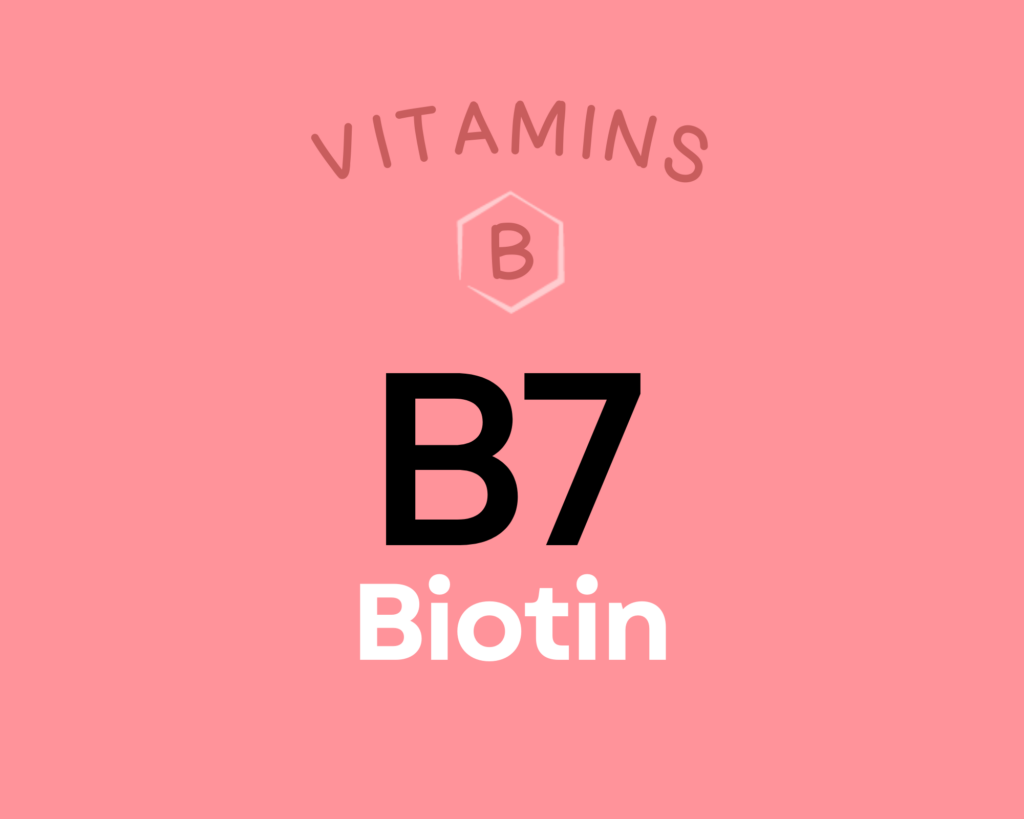
Biotin is a water-soluble B vitamin, also known as vitamin B7. Like other B vitamins, it plays an important role in energy metabolism (serving as a coenzyme for five carboxylase enzymes), neurotransmitter production, cellular function, and the function of various organs. Getting enough biotin can help support healthy nail and hair growth. It’s also particularly important during pregnancy, with low intakes increasing the risk of premature delivery and birth defects. There’s even some evidence biotin can benefit diabetics and reduce functional disabilities in people with multiple sclerosis. Learn more about biotin here.
Kelp Provides 23% DV Magnesium
Kelp is also an excellent source of magnesium, providing 23% of the daily value per 1-cup serving!
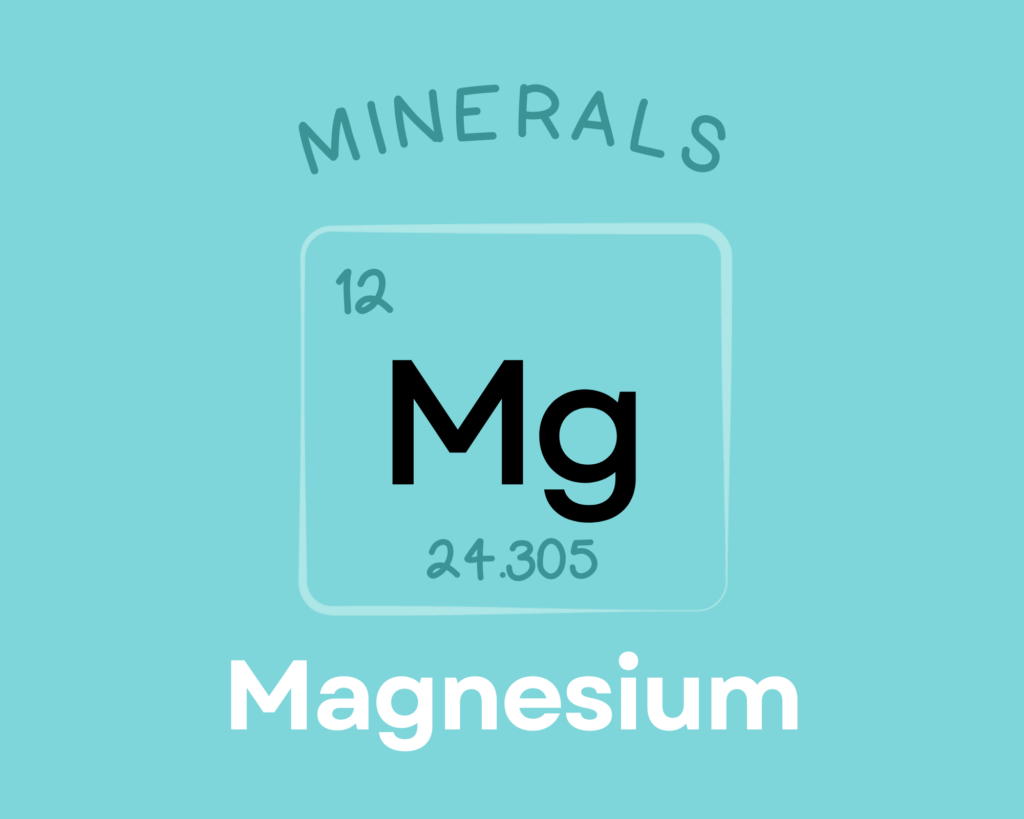
Magnesium is an essential mineral needed by every cell in the body. As an electrolyte, it’s important for regulating fluid balance, nerve and muscle function, blood pH, and neurotransmission. It also serves as a cofactor for hundreds of different enzymes, giving it a role over 300 metabolic reactions—including pathways for cell signaling, energy production, protein synthesis, nucleic acid synthesis, and ion transport. Magnesium also has important structural functions in cells and bone tissue. Consuming enough magnesium may help protect against a variety of chronic diseases, including cardiovascular disease, type 2 diabetes, and osteoporosis. Learn more about magnesium here.
Learn What Foods Are the Best Sources of Every Nutrient

The Top 25 Foods for Every Nutrient
The Top 25 Foods for Every Nutrient e-book is a well-organized, easy-to-use, grocery store-friendly guide to help you choose foods that fit your needs of 43 important nutrients while creating a balanced nutrient-dense diet.
Get two “Top 25” food lists for each nutrient, plus you’ll find RDA charts for everyone, informative visuals, fun facts, serving sizes and the 58 foods that are Nutrient Super Stars!
Buy now for instant digital access.
How Much Kelp Should We Eat Per Day?
Sea vegetables are nutritional powerhouses full of health-promoting compounds – in fact they are one of the most unique and nutritious foods on the planet!
Sea vegetables are especially valuable for their unique fiber types (like fucoidans, laminarins, alginates), carotenoids (like fucoxanthin, astaxanthin) and ultra-trace minerals (like vanadium). And, it doesn’t take much to deliver a measurable health benefit! A 2020 study showed that eating seaweed almost every day reduced risk of cardiovascular disease by 21% in men and a 20% in women, compared to never eating seaweed. A 2021 study showed that eating more sea vegetables per day reduced risk of all-cause mortality by 6% (the median intake was 6.6. grams daily for males and 9 grams daily for females).
A serving of fresh or rehydrated seaweed is 1-cup (about 15 grams), whereas a serving is 5 grams for dried sea vegetables and 3 grams for sheets (like nori wraps). Some sea vegetables can have very high iodine content (especially kelp like kombu), so it’s worth making sure you don’t exceed the tolerable upper limit of iodine by overdoing sea vegetables. If you stick with lower iodine content sea vegetables like nori and wakame, a serving or two per day, generally won’t exceed the tolerable upper limit of iodine. Learn more about iodine here.
It’s always best to mix up the veggies you eat day to day (aiming for a wide variety of different vegetables and fruits throughout the week), and kelp definitely has a place at the table.
Easily track your servings of Nutrivore Foundational Foods!

The Nutrivore Weekly Serving Matrix
The Nutrivore Weekly Serving Matrix digital resource is an easy-to-use and flexible weekly checklist designed to help you maximize nutrient-density and meet serving suggestions of Nutrivore foundational foods, all without having to weigh or measure your foods!
Includes a 22-page instructional guide and downloadable interactive guides.
Buy now for instant digital access.
cITATIONS
Expand to see all scientific references for this article.
Ey J, Schömig E, Taubert D. Dietary sources and antioxidant effects of ergothioneine. J Agric Food Chem. 2007 Aug 8;55(16):6466-74. doi: 10.1021/jf071328f. Epub 2007 Jul 6. PMID: 17616140.
Fineli Finnish Food Composition Database: Seaweed, Kombu, Dried Laminaria spp.
Schiener P, Black KD, Stanley MS, Green DH. The seasonal variation in the chemical composition of the kelp species Laminaria digitata, Laminaria hyperborea, Saccharina latissima and Alaria esculenta. J Appl Phycol. 2015. Vol 27:363-373. doi 10.1007/s10811-014-0327-1
USDA Food Central Database: Seaweed, kelp, raw
Watanabe T, Kioka M, Fukushima A, Morimoto M, Sawamura H. Biotin content table of select foods and biotin intake in Japanese. Int J Anal Bio-Sci. 2014. Vol 2(4):109-125.


